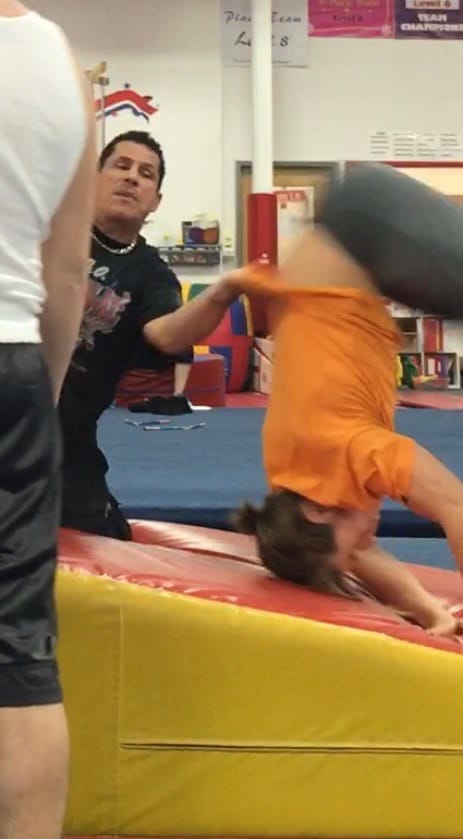Teaching “movement” is no easy task.
For one, it requires a teacher. It requires also a physical space in which we can congregate. It demands the teacher has something to teach, and students who will learn from them. Further, it demands that the students know how to learn. Why is this?
We have to first understand what we mean when we say “teaching movement”. This is not the same as “teaching movement(s)”. I am able to apply this distinction thanks to my teacher Ido. Without delving into an entirely separate topic, we aim to use material to develop a practice within each student. If they are not capable of learning, then they will simply try to play copy cat. This may get them by in your traditional fitness class. You can fake your half range of motion squats. Doing crappy push-ups is practically the norm anyway, so no problem there. To top it all off, each movement is repetitive, and the instructor will MAKE SURE that you are not uncomfortable, and can immediately partake in the class with no issues…
Garbage.
The problem is that people want to understand things NOW. When we aim to understand things now we do a couple of things.
-
I have short term success – at the expense of long term success
-
If I cannot understand now – I will go back to what is comfortable, which I can understand easily.
Consider these few experiments done on the subject of learning.
Nate Kornell is a cognitive psychologist at Williams college, and with psychologist Janet Metcalfe they conducted a study on children in the South Bronx. These students were at risk of failing school and had very low literacy. The experiment had them learning vocabulary, and was intended to test the generation effect.
Some of the students were given typical definition cards with the definition followed by the word it was matched too. This was a more passive modality of studying. Other students were given ONLY the definition, then given time to generate a potential answer, even if they were wrong (or very wrong). The researchers noted that the second group performed 400% better than the self-study group (passive). They followed up with a 7 week study that showed the same results – but 600% better in the second group.
This experiment was done on children and also replicated with students of Columbia University. But what does this say?
Well, it seemed as if the students who scrambled in their brains to try and find some type of answer, anything at all, recalled the information better long term when they struggled initially. It is important to note that the researchers ALWAYS corrected them after their mistakes, but they let them make their mistakes first. This was crucial information, as they learned that feedback had a very strong effect, but you cannot be corrected on the thing you never tried to do (right or wrong). Read the study here.
“But for learning that is both durable (it sticks) and flexible (it can be applied broadly), fast and easy is precisely the problem.”
David Epstein
Let us take a look at one more study, by one of the same researchers. This time, they had 2 monkeys named Oberus and Macduff. The monkeys were trained to memorize lists of random pictures, in a set order. The monkeys had a screen to play around with organizing the lists, but here is the catch.
The monkeys were allowed to request “hints” which would guide them towards the desired list. However, they were not allowed to do this on every list. The other lists were the same trial and error fashion, but with no hints. Here is what they found.
“Training with hints resulted in high levels of initial performance, but accuracy dropped precipitously when the hints were removed on the criterion test. Training without hints led to relatively poor initial performance, but accuracy increased steadily and remained high on the criterion test.”
This study showed that the monkeys essentially traded short term success at the expense of long term (#1). On the lists in which they actually struggled and were given no hints – they did the opposite. Short term success was foregone in exchange for long term success. They performed better on the lists that they actually initially struggled with, going through the learning process. Interesting, right?
Now, as with all things, let us make a connection.
I have students who seem to understand things very quickly, with only a small period of struggle. I have other students who are somewhere in the middle. It takes them multiple sessions to understand concepts/movements/etc. and this is all fine. I then have students who want me to physically do the movement for them. They get immediately irritated when they do not understand something, and they expect that it should have happened right now, otherwise it must be my fault as the teacher. These are the people who ask me the same questions day in and day out, the monkeys who ask for constant hints, the kids who read the flashcards…
The good news? You can change that. I hope this piece changes your perspective on the struggle we all feel, on how “right” it is to sometimes be wrong, and then once corrected, continue on your way much better off.
Keep making mistakes people, and you will learn to learn.
“Rather than spoon-feed students by laying everything out for them, it would behoove the instructor to pause from time to time, asking questions that encourage the students to generate the answers themselves, Socratic style”
Janet Metcalfe & Nate Kornell
Kevin
P.S. – The posts picture is of me in the vital first stage of learning. Falling straight on your head. But guess what? Over time I nailed that backflip.

